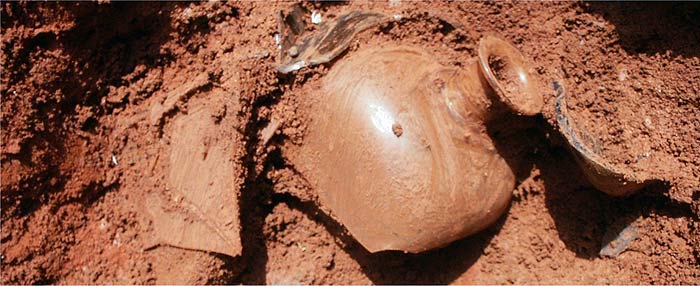ABOMEY
Ancient Abomey - the Dahomean capital - holds about 20 of Royal Palaces and palace estates, including the present Palace Museum, a UNESCO World Heritage monument. Abomey should also be known for many other monuments, including voudou shrines, and, for its archaeology.

Map of Abomey with moat and royal palaces.
The 13 km long moats of Abomey are 12 m wide and 6½ m deep, they date to the mid17th century and frame a very large square area. The moat can still be seen in many places. The wall behind, however, has almost completely disappeared. Under the wall, traces of settlements, going back at least to the 12th century AD, have been found - making Abomey much older than the Kingdom of Dahomey.
Studying the layers in the filling of moat, it is possible to link local ceramics and other find with dated European bottles, smoking pipes, and other items. Thus, knowledge of the age of different kinds of fine local pottery can be gained.
Throughout Abomey, burial shrines of royalty can be seen. In various places - also outside Abomey - graves have been found during construction. The graves are small underground chambers where the dead person is resting with, among other things, personal attire, including bronze bracelets (symbols of rank and office) and European glass beads, and vessels for drink and food; also cowries were given to the dead, as money.

Fragmented European bottle of the 18th century.
